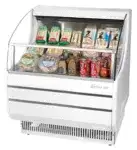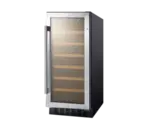
Restaurant Cleaning Procedures & Cleaning Checklist
Keeping any restaurant clean is essential for its success. It ensures a pleasant dining experience for customers and plays a key role in maintaining food safety and preventing food-borne germs and diseases. However, staying on top of all the cleaning tasks can be difficult since it requires dedication, attention to detail, and using the right cleaning materials.
Some of the most successful restaurants in the world, such as Michelin-starred Osteria Francescana and The French Laundry, attribute a large part of their success to their cleanliness standards. They acknowledge that a spotless kitchen and dining area not only ensures the health and safety of their customers but also reflects their commitment to excellence in every aspect of their business.
Luckily, our ultimate restaurant cleaning checklist and procedure makes the process easier and more efficient. This comprehensive guide covers everything from deep cleaning the kitchen appliances to sanitizing the tables and chairs!
The Procedure of Cleaning a Restaurant
Before delving into details, it is necessary to understand the overall procedure of cleaning a restaurant. Whether you are a business owner, restaurant manager, or opening a restaurant business, there are several essential steps to maintaining a hygienic restaurant environment.
Remove debris and trash
Remove all debris and trash from the dining room, kitchen, and other areas. This includes emptying trash cans and recycling bins, sweeping and vacuuming floors, and wiping down surfaces to remove dirt or debris.
Pre-clean surfaces
Take a damp cloth or paper towels and pre-clean surfaces such as counters, tables, and other areas that require attention to remove loose dirt or debris.
Clean and sanitize surfaces
Use a cleaning solution to remove dirt and grime, followed by a sanitizing solution to kill any bacteria or viruses on the surfaces. Pay close attention to door handles, light switches, and menus since these spots can easily harbor germs and bacteria. Follow the manufacturer’s instructions for cleaning and sanitizing products.
Clean floors
Clean floors with a broom or vacuum cleaner to remove any loose debris. Mop floors using a cleaning solution and water to remove stubborn stains and dirt. Pay attention to areas around equipment and corners, as they can accumulate dirt and debris.
Clean restrooms
Clean restrooms thoroughly, paying attention to high-touch areas such as sinks, toilets, and door handles. Use a cleaning solution and water to clean all surfaces, followed by a sanitizing solution to eliminate bacteria or viruses.
Clean kitchen equipment
Clean kitchen equipment such as ovens and fryers, following the manufacturer’s instructions for each item. In addition, use a degreaser on greasy surfaces and sanitize all surfaces with a food-safe disinfectant.
Empty and clean refrigerators and freezers
Empty and clean refrigerators and freezers thoroughly using a cleaning solution and water. Wipe down shelves and drawers, paying attention to any spills or stains. Once cleaned, sanitize the surfaces with a sanitizing solution.
Restock and organize
After completing all the steps, restock supplies and organize equipment and supplies for the next business day.
Daily Restaurant Cleaning Checklist

Daily cleaning is crucial for maintaining food and kitchen safety. Since this is a general checklist, it’s important to note that tasks may vary based on the size of the restaurant and the number of employees. However, following a daily checklist will ensure that the restaurant remains clean and sanitary for employees and customers.
Front of House
- Clean all tabletops, including chairs and benches
- Sweep and mop the floors
- Wipe down door handles, handrails, and any other high-touch areas
- Refill condiments and clean salt and pepper shakers
- Clean the hostess stand, including the podium and any menus or reservation books
- Clean and disinfect restrooms, including sinks, toilets, and floors
Back of House
- Clean all kitchen surfaces, including counters, prep areas, and cutting boards
- Sweep and mop the floors, including under and behind equipment
- Clean and disinfect all kitchen equipment, such as ovens, grills, and fryers
- Clean and sanitize all cooking utensils and dishes
- Clean and disinfect employee break areas and lockers
- Empty all trash and recycling bins
- Wipe down walls and ceilings, paying attention to any grease buildup
- Clean and disinfect sinks, including faucets and handles
Weekly Restaurant Cleaning Checklist
A weekly cleaning checklist helps ensure that all areas are inspected, cleaned, and maintained consistently. Not to mention that having this list in place helps maintain the highest standards of hygiene in the restaurant, sparing owners costly violations due to improper cleaning protocols.
Front of House
- Dust all surfaces, including light fixtures, decorative items, and shelving
- Clean windows, mirrors, and other glass surfaces
- Vacuum or sweep all floors, including under furniture and in corners
- Mop hard floors using a suitable cleaner
- Clean and sanitize all surfaces that come into contact with food, such as tables, chairs, and booths
- Deep clean carpets or rugs, if present
- Check the cleanliness and functionality of restrooms
- Restock all necessary supplies, such as toilet paper and soap
- Disinfect high-touch areas such as doorknobs, handles, and switches
Back of House
- Empty and clean all grease traps and dispose of the grease properly
- Clean and sanitize food preparation items, such as cutting boards and knives
- Clean and sanitize the inside and outside cooking equipment, such as ovens and grills
- Deep clean floors, especially in hard-to-reach areas like corners and under equipment
- Check and clean all drains to be free of clogs or debris
- Clean and disinfect employee areas, such as break rooms and lockers
- Restock necessary supplies, such as cleaning solutions, trash bags, and paper towels
Monthly Restaurant Cleaning Checklist

Maintaining a monthly restaurant cleaning checklist allows for detailed and thorough cleaning, reducing the risk of cross-contamination or food-borne illnesses. This checklist also helps restaurant owners save time and money by identifying potential problems before they become costly repairs or replacements.
Front of House
- Clean and sanitize dining tables and chairs, paying attention to corners and edges
- Clean and sanitize booth seats and backs
- Clean and sanitize the bar top, stools, and footrests
- Clean and sanitize host/hostess station and menus
- Dust all surfaces, including artwork, mirrors, and plants
- Vacuum or mop all floors, including under tables and chairs
- Clean and sanitize the entry hall, including door handles and windows
- Deep clean carpets and upholstery
Back of House
- Clean and sanitize all kitchen equipment, including stoves, ovens, grills, and fryers
- Deep clean and degrease exhaust hoods and vents to maintain proper ventilation
- Clean and sanitize all kitchen tools and utensils
- Clean and sanitize floors and walls, including behind and underneath equipment
- Deep clean and descale coffee makers and other beverage machines
- Clean and sanitized employee break room, including tables, chairs, and appliances
- Deep clean and organize storage areas, including dry storage, refrigerators, and freezers
Invest in Right Supplies for Cleaning
Whether hand soaps and sanitizers for proper hygiene or mops and buckets for spotless floors, investing in quality cleaning supplies will help owners maintain their restaurants in top shape, while there are many different cleaning products available on the market, there are a few main supplies to consider investing in.
First, it is essential to have a good all-purpose cleaner that can be used on various surfaces, such as countertops, floors, and tables. Another great investment is a high-quality degreaser, which is especially important for restaurants that work with grease and oil. A degreaser will cut through the grime and buildup that accumulates in the kitchen over time.
Invest in disinfectants that kill surface germs and bacteria on cutting boards and prep tables, such as bleach or quaternary ammonium. Look for products that are environmentally friendly, non-toxic, and safe for food contact surfaces. In addition, having plenty of microfiber towels and mop heads on hand can effectively trap dirt and debris.
Vacuum cleaners are also necessary as they quickly clean up floor spills and debris. On the other hand, handheld steam cleaners are useful for deep-cleaning hard-to-reach areas like corners and crevices.
Consider creating a janitorial checklist to determine the types and quantities of needed cleaning products and equipment. These can vary depending on the size of the restaurant, the number of customers served, and the restaurant’s cuisine or the type of food it serves.
Buying janitorial supplies in bulk for commercial kitchen cleaning is also a good idea since it can save money in the long run. Look for deals and discounts from suppliers, and stock up on essential items such as paper towels, cleaning solutions, and trash bags.
Indeed, with high-quality cleaning supplies, restaurant owners can ensure they meet health regulations and follow best practices. They can also reduce labor costs by ensuring each task is completed properly without going back over it or using more materials than necessary.
To Wrap Up!
No matter the type of restaurant, hygiene should always be a top priority. Not only does it safeguard the health of customers and employees, but it is also a key factor in maintaining good customer satisfaction and loyalty.
The ultimate restaurant cleaning checklist provides the framework for achieving this goal. With proper attention to detail and consistent implementation of these best practices and kitchen cleaning checklists, restaurant owners can always provide their customers with an outstanding dining experience.
FAQ
How often should a restaurant be cleaned?
Cleaning routines should be tailored to the specific needs of each restaurant, but all restaurants should strive for daily cleanings to maintain high hygiene standards and customer satisfaction.
What is the importance of cleaning in a restaurant?
Proper cleaning of the kitchen and dining area, along with food preparation surfaces, cooking equipment, and utensils, is necessary to reduce the risk of contamination and prevent food-borne illnesses.
What are some common cleaning chemicals used in restaurants?
Common cleaning chemicals used in restaurants include chlorine, ammonia, and iodine. Chlorine sanitizes surfaces and kills bacteria, ammonia effectively breaks down grease and grime, and iodine kills germs on contact. It is important to note that these three chemicals are safe to use in food preparation areas when diluted properly.
Who is responsible for cleaning a restaurant?
Everyone in the restaurant is responsible, from the staff to management, for ensuring that the restaurant is clean and orderly. However, the cleaning staff is typically responsible for conducting a deep cleaning of the restaurant, such as mopping floors, washing dishes, and scrubbing surfaces.
What should be included in a restaurant cleaning checklist?
A restaurant cleaning checklist should include areas that need to be cleaned regularly, such as floors, food contact surfaces, bathrooms, kitchens, and dining areas. In addition, it should also include instructions on how often each area needs to be cleaned and what products should be used for proper cleaning.
How do restaurants maintain cleanliness?
Restaurant managers must implement protocols and regular checklists to ensure their restaurant is always clean and hygienic. These include daily cleaning tasks, periodic deep cleaning, and staying on top of food safety regulations.




